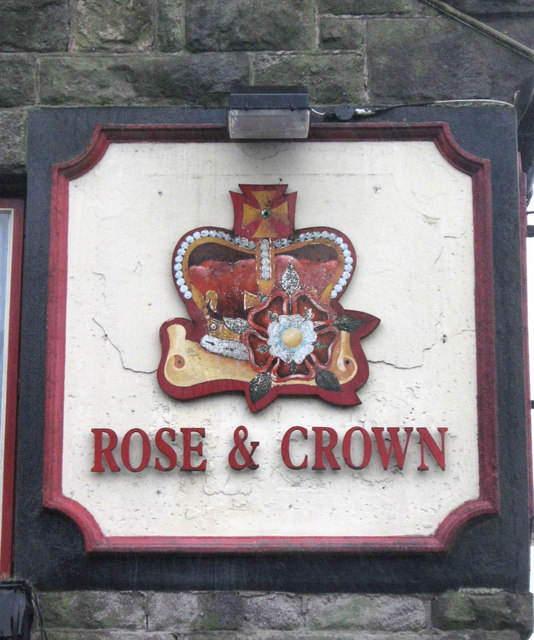Sign for the Rose and Crown
Introduction
The photograph on this page of Sign for the Rose and Crown by Jonathan Kington as part of the Geograph project.
The Geograph project started in 2005 with the aim of publishing, organising and preserving representative images for every square kilometre of Great Britain, Ireland and the Isle of Man.
There are currently over 7.5m images from over 14,400 individuals and you can help contribute to the project by visiting https://www.geograph.org.uk

Image: © Jonathan Kington Taken: 5 Jan 2011
This sign is attached to the wall of the Rose and Crown in Biddulph Moor (Image and Image). The rose is an interpretation of the Tudor Rose that is the combination of the red rose of Lancashire and the white rose of Yorkshire. The thirty years between 1455 and 1485 saw a lot of bitter fighting between the two counties for the right to the throne, known as the Wars of the Roses. The final battle was won by Henry Tudor, later known as Henry VII, who went on to marry Elizabeth of York in an attempt to reconcile the two factions. From this union the house of Tudor was founded, represented by the bi-coloured rose. The crown has been a popular name, either on its own or linked with something else, for at least six hundred years. It was easy to paint and just as easy to recognise, it also declared an allegiance to the ruling monarch although during Cromwell's time in power after the Civil War it very rapidly disappeared- making just as quick a comeback after the Restoration.

